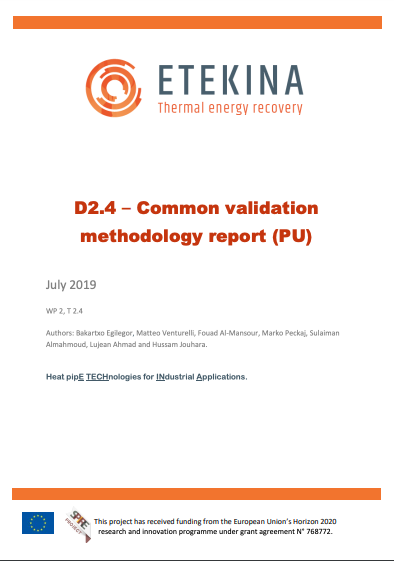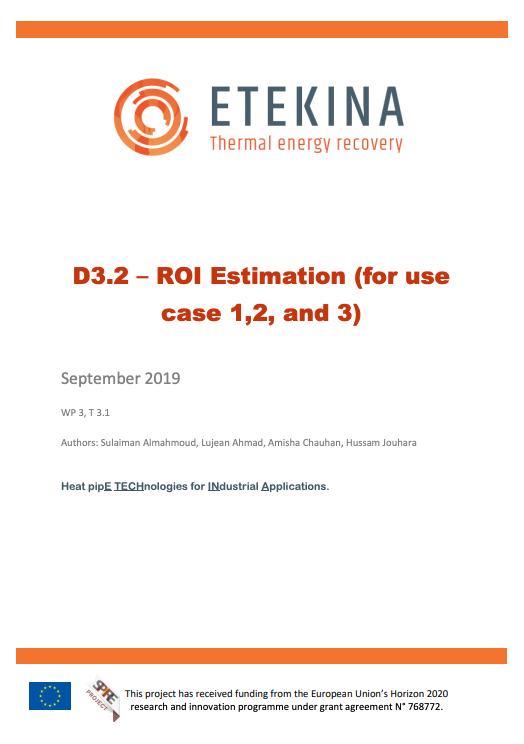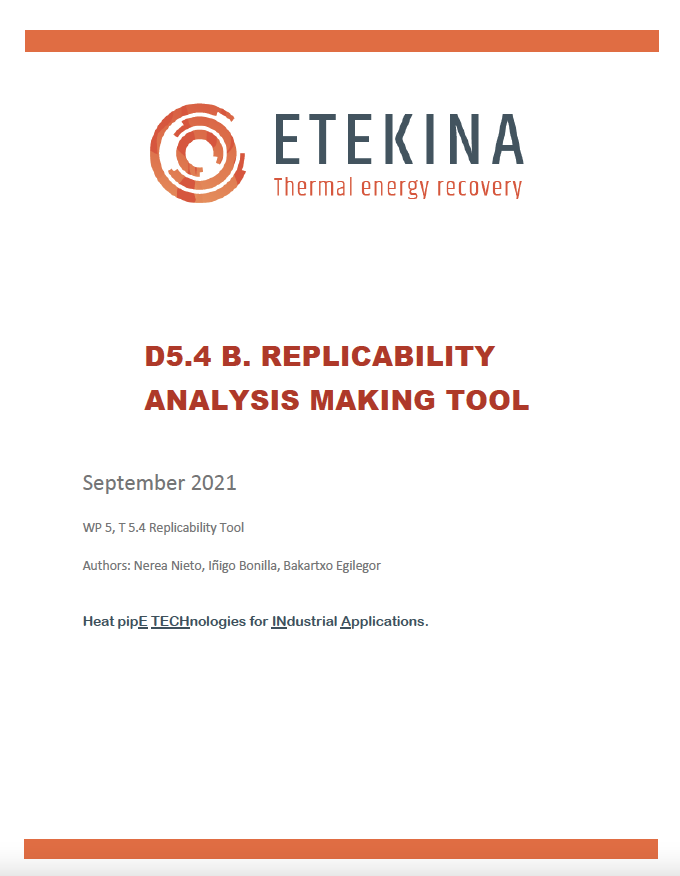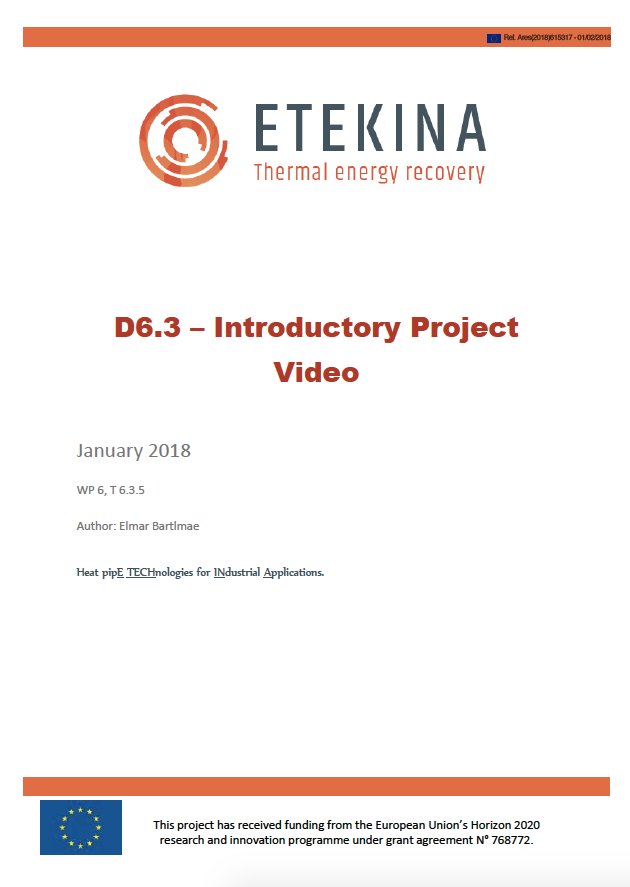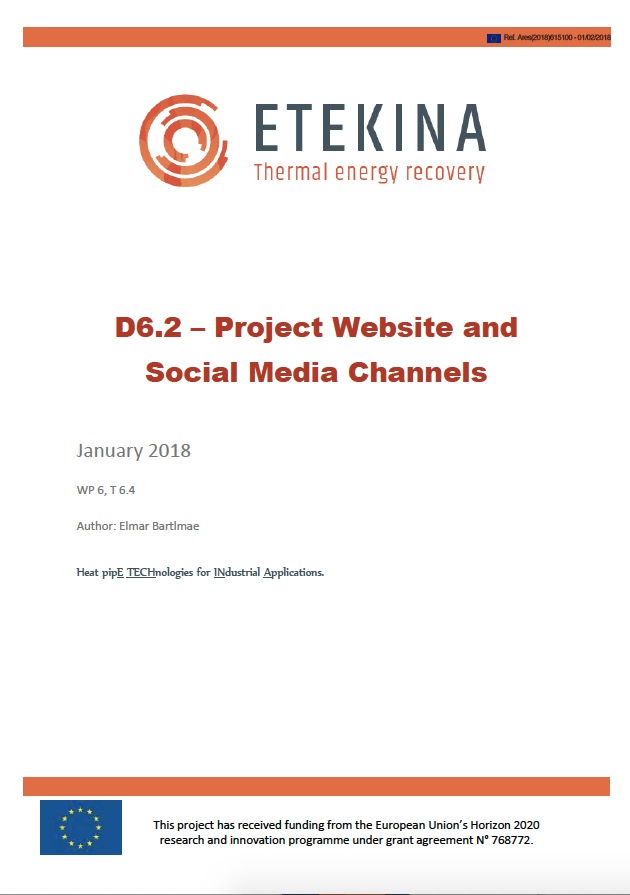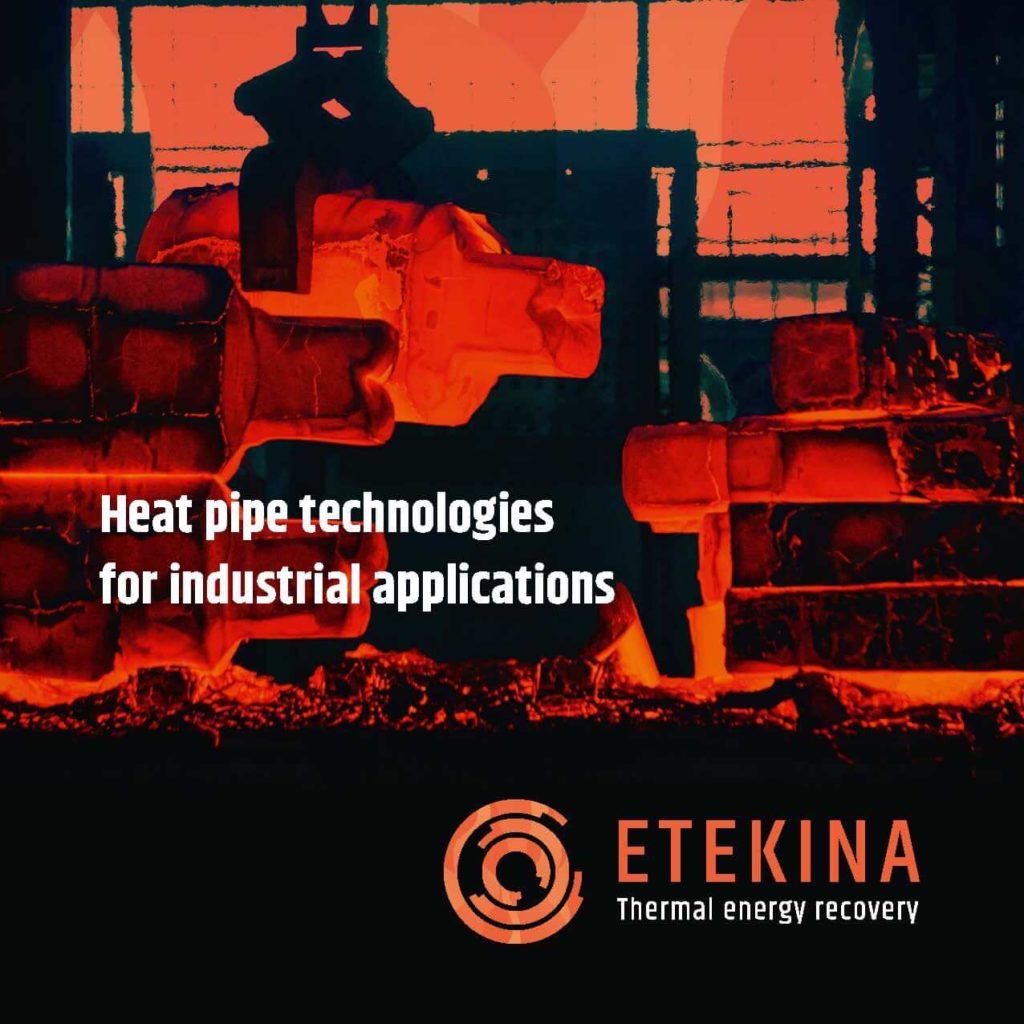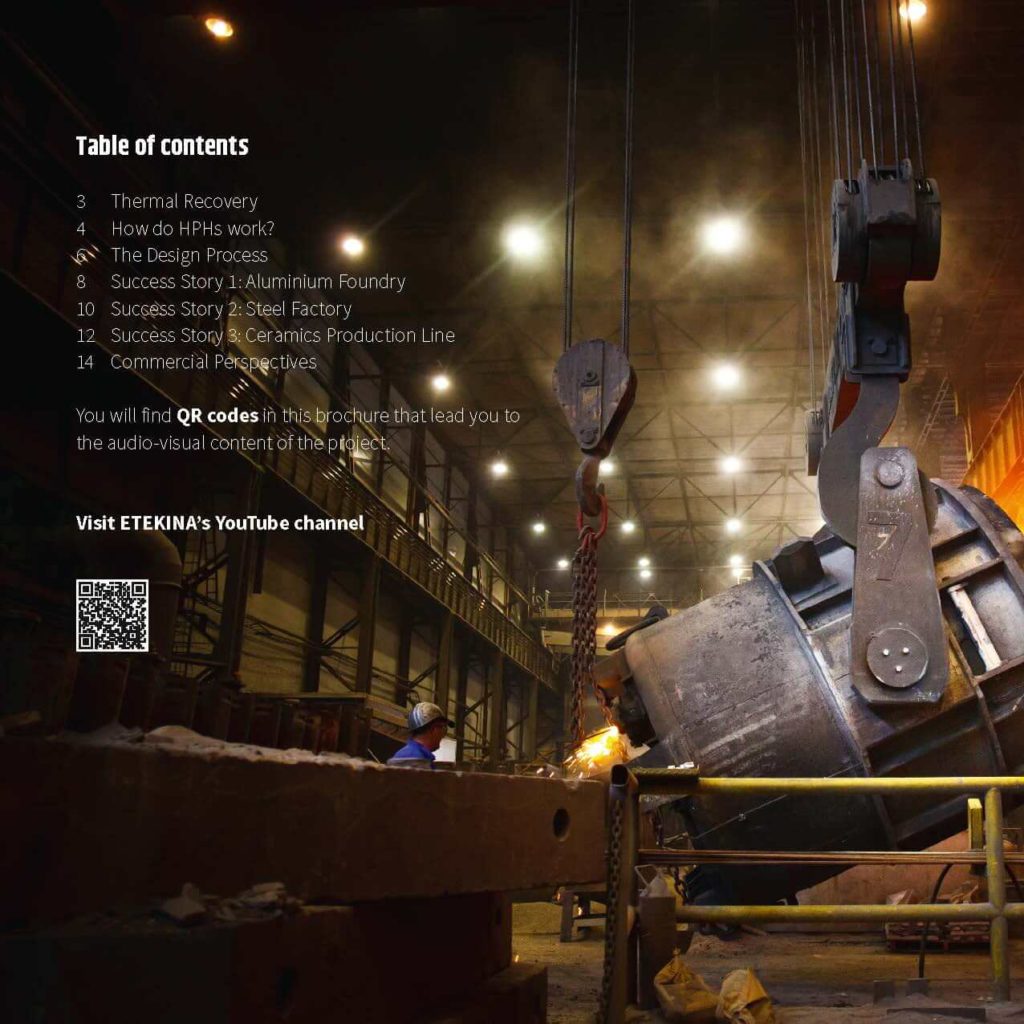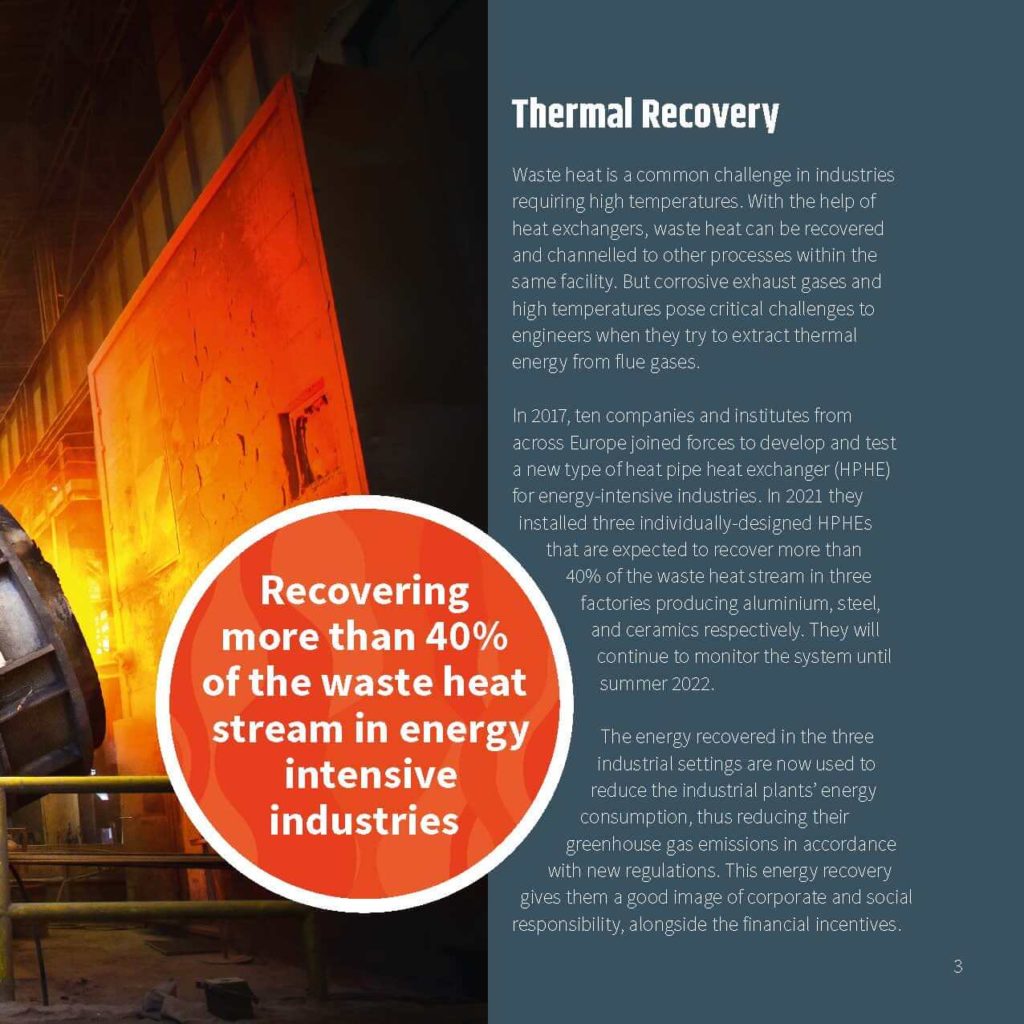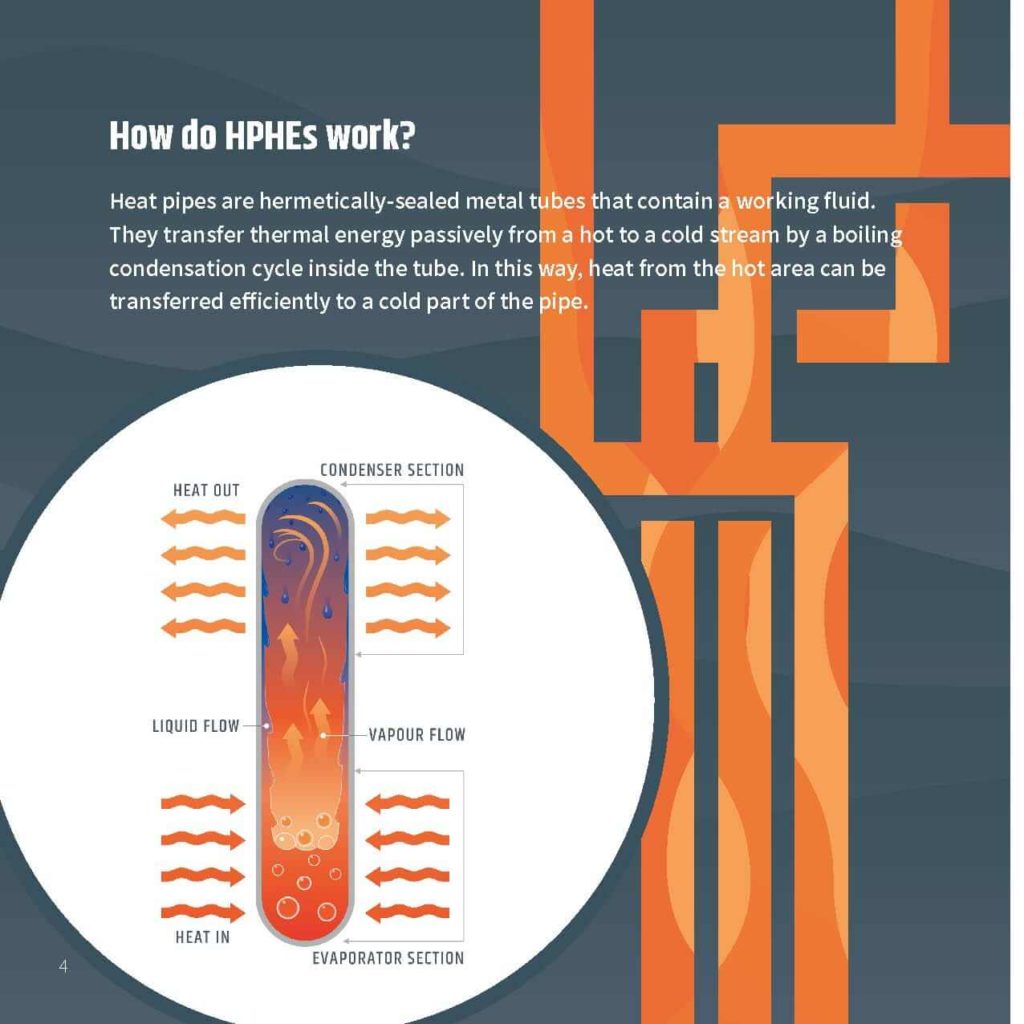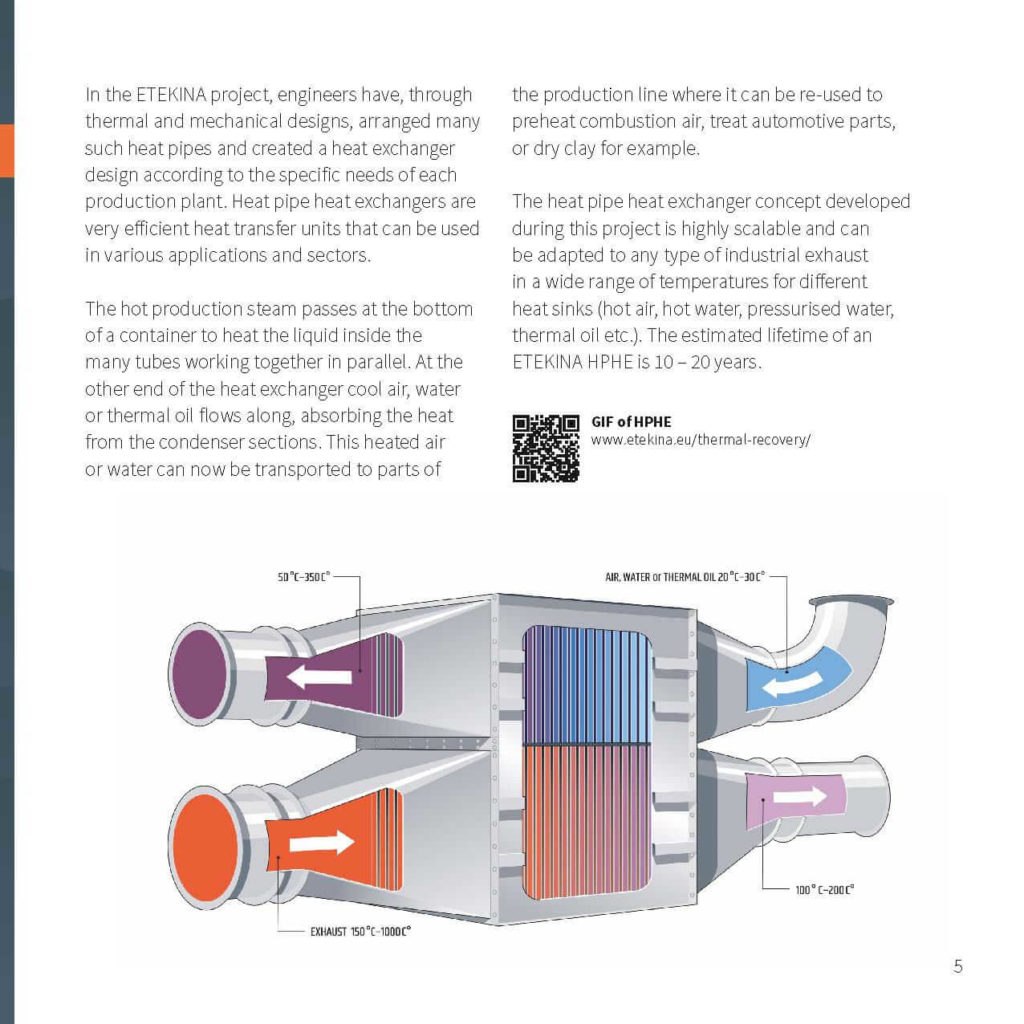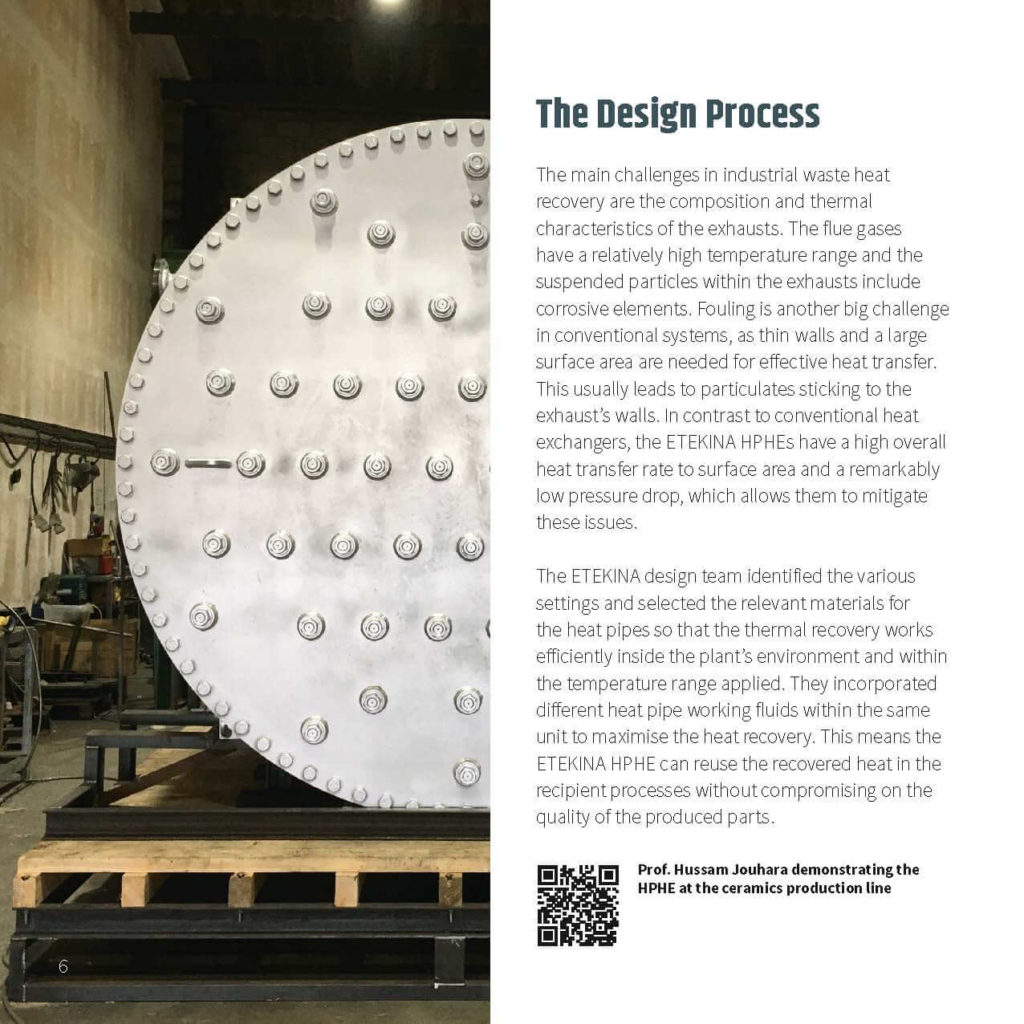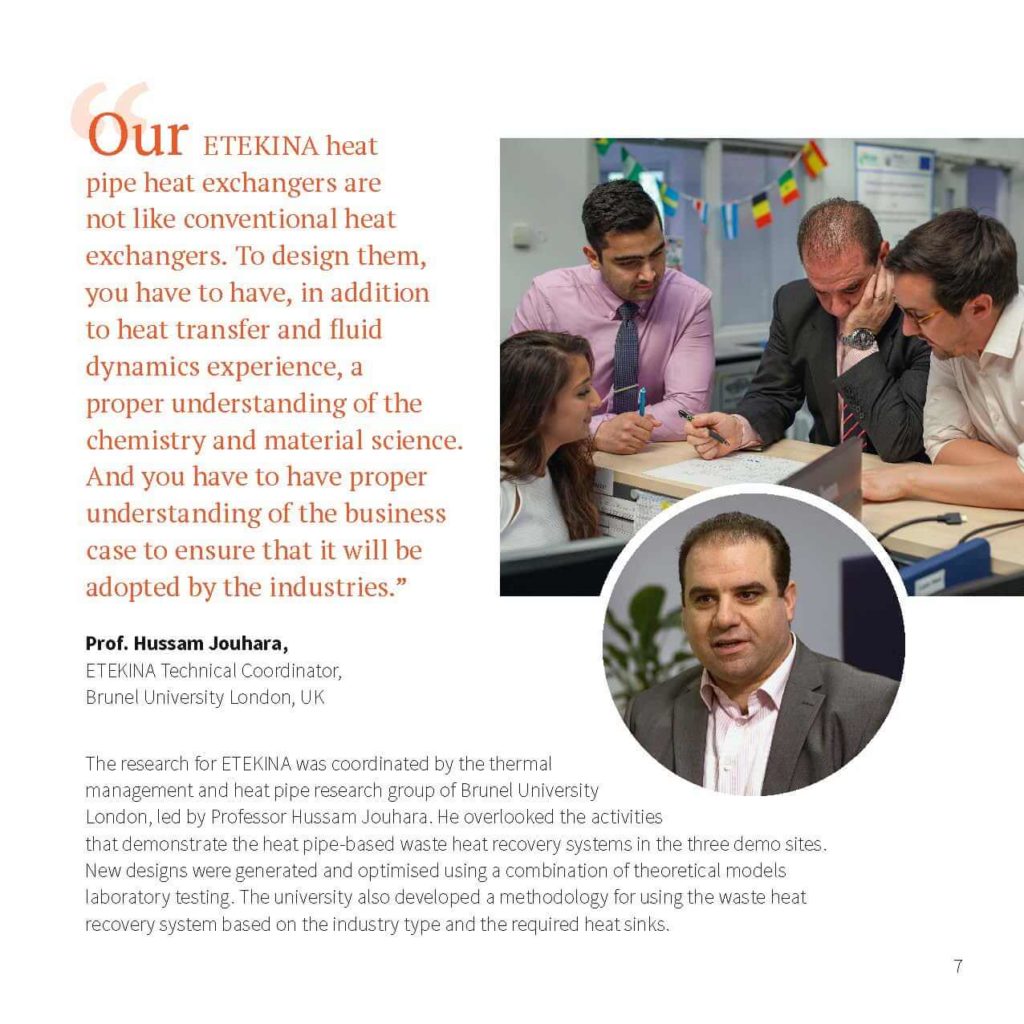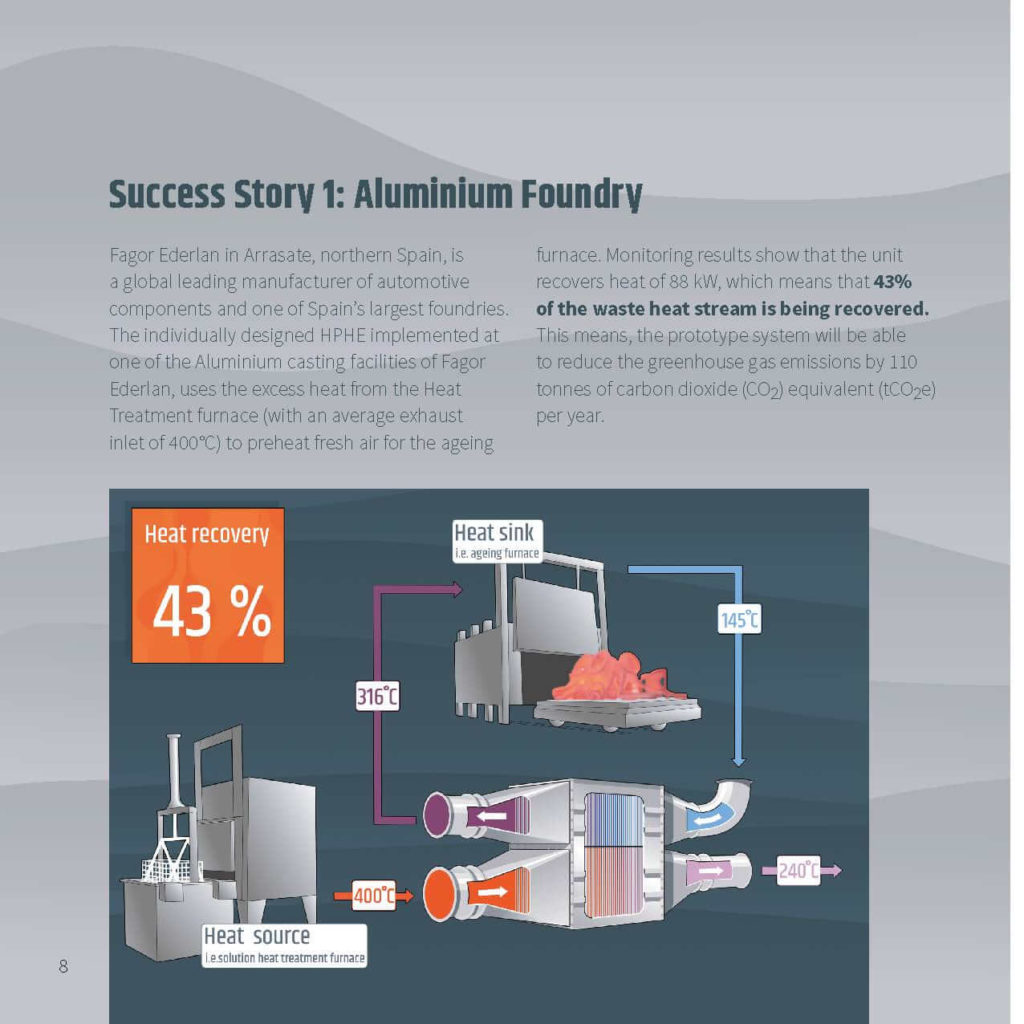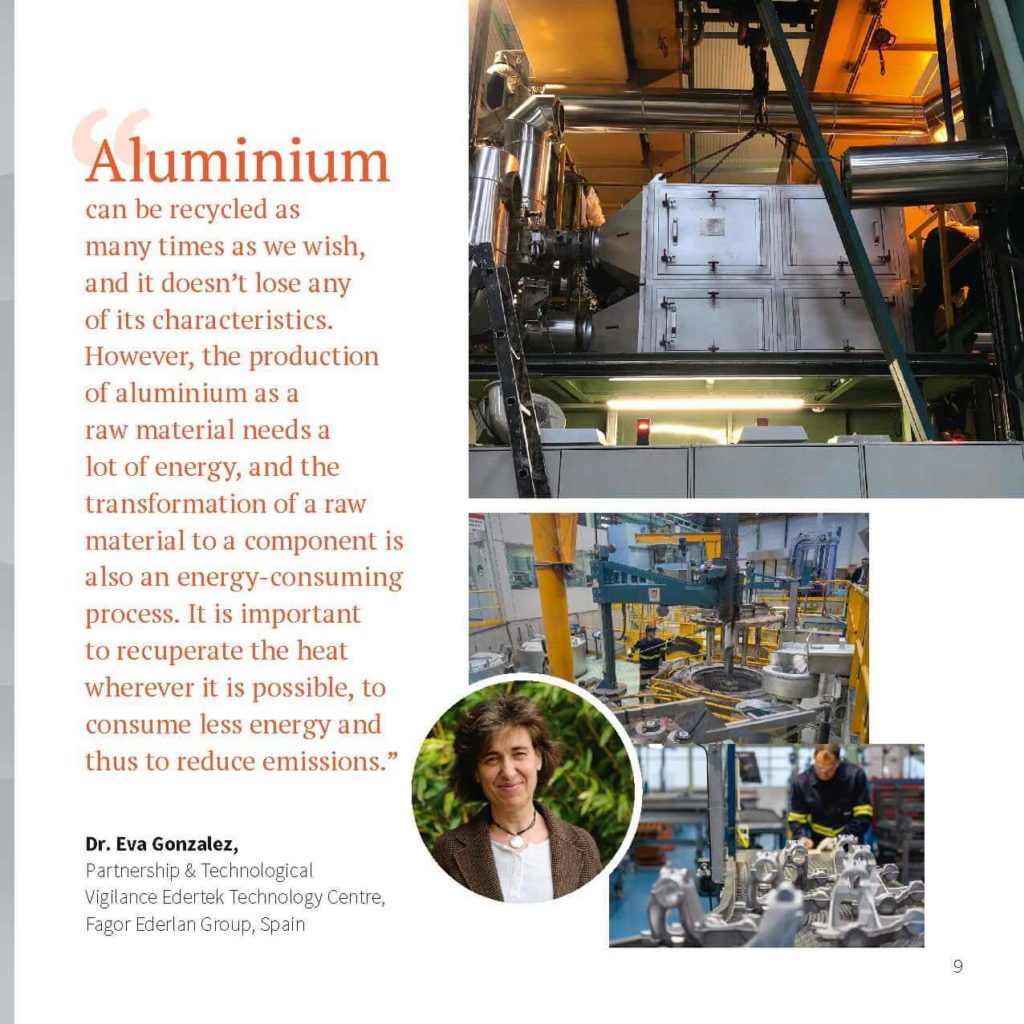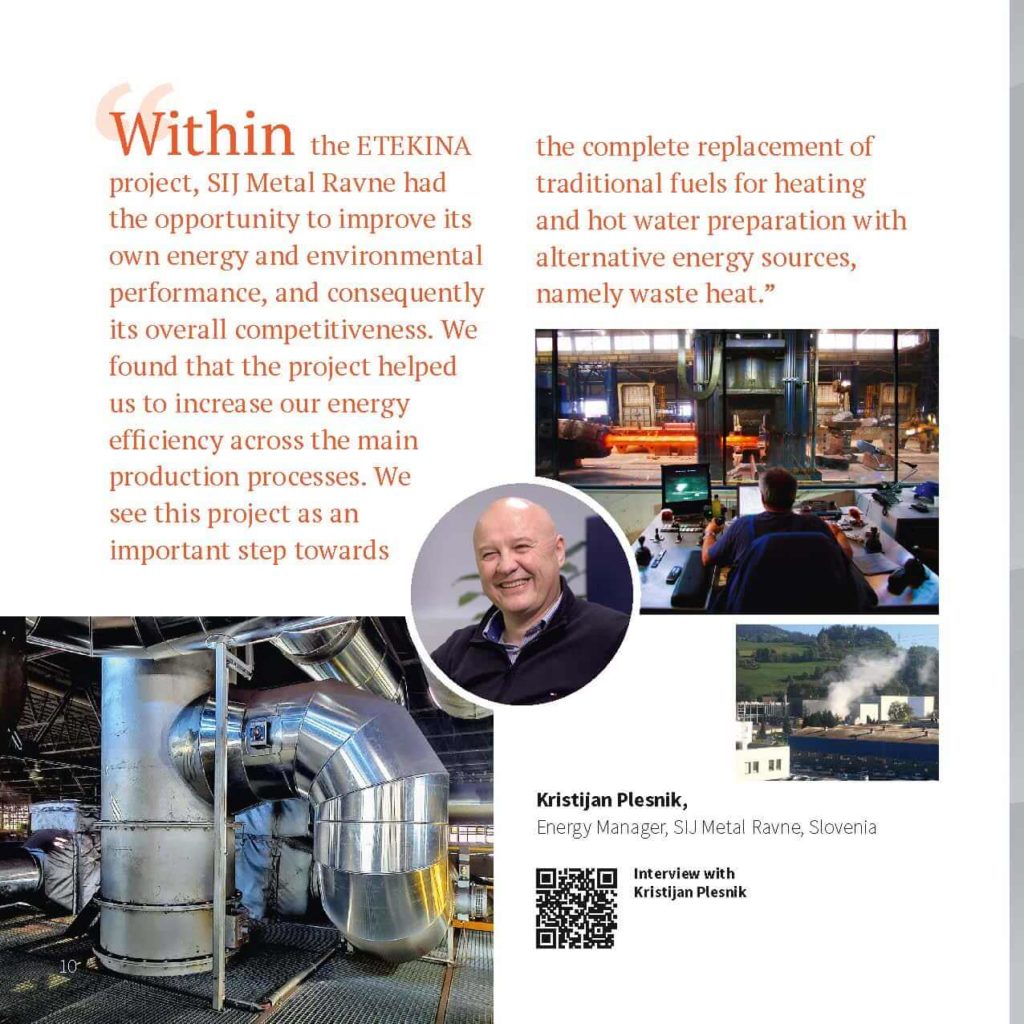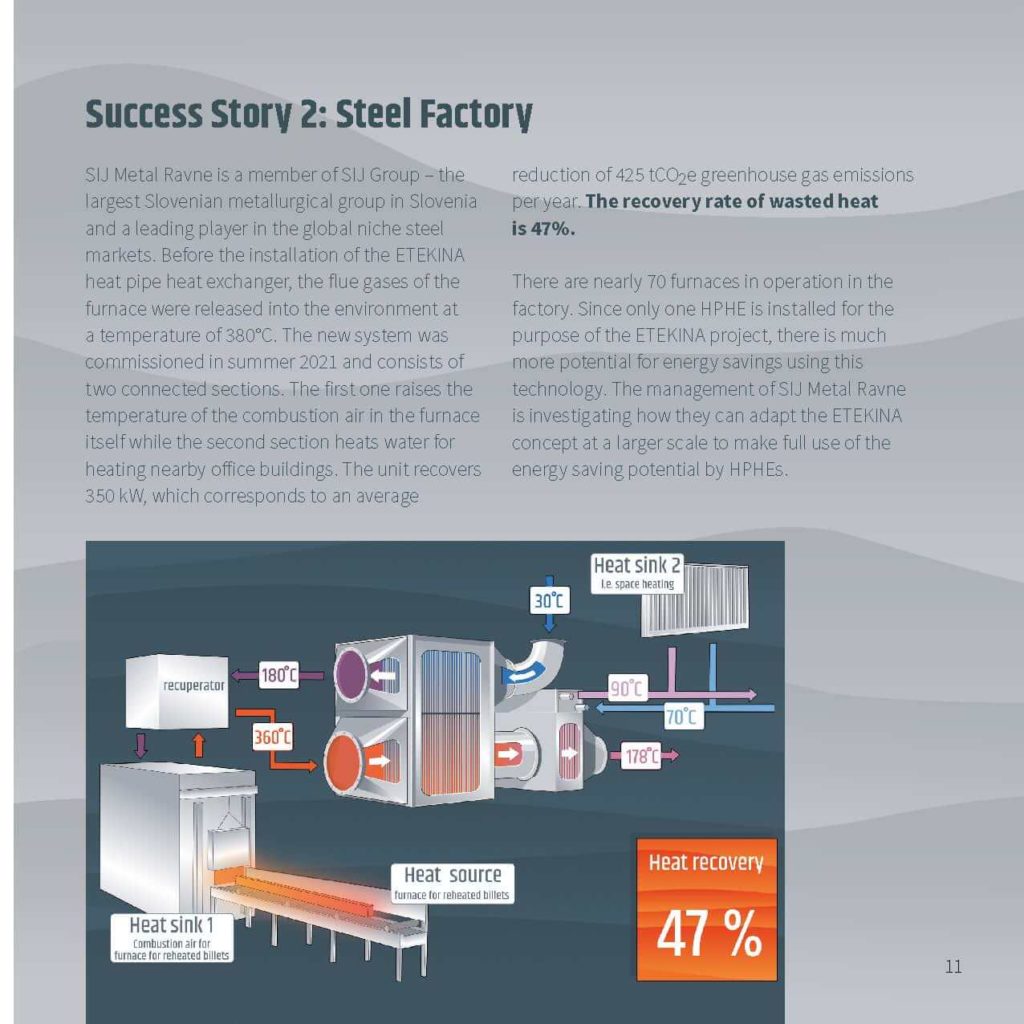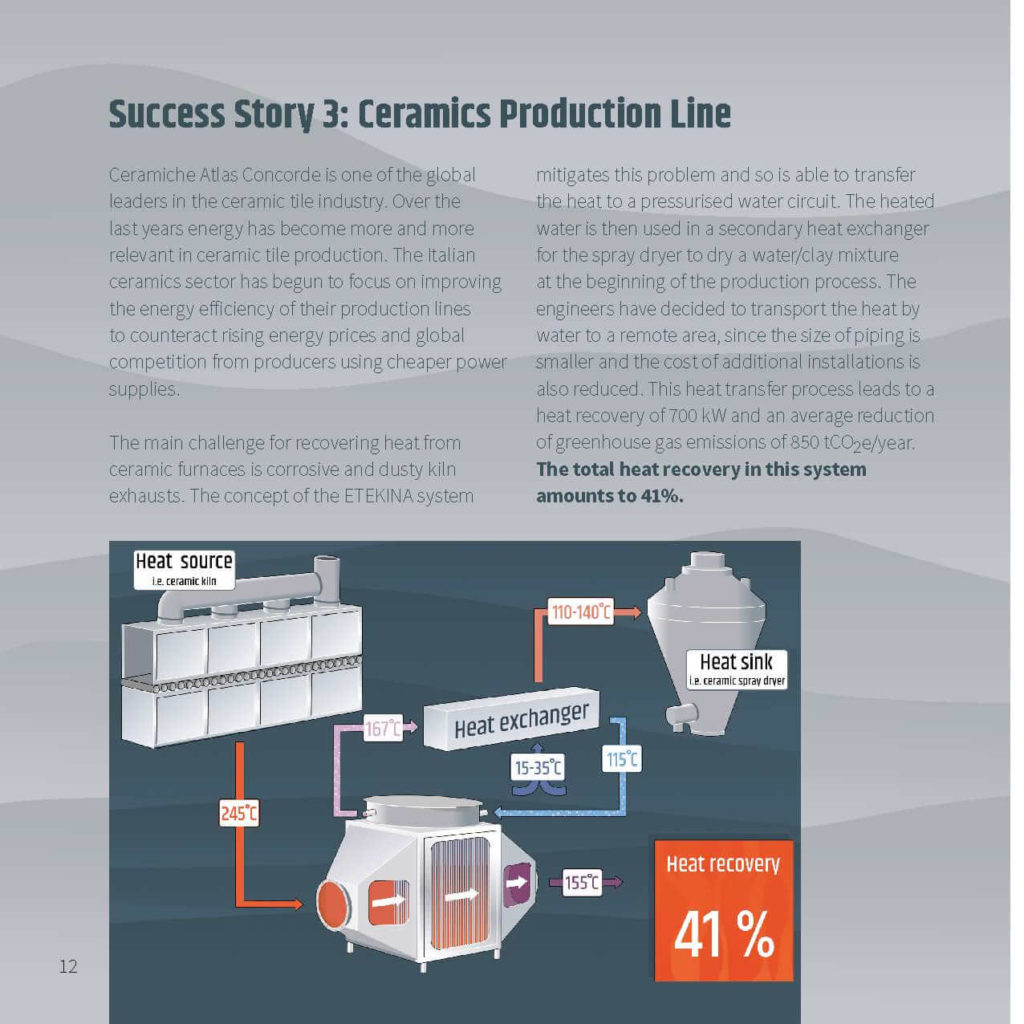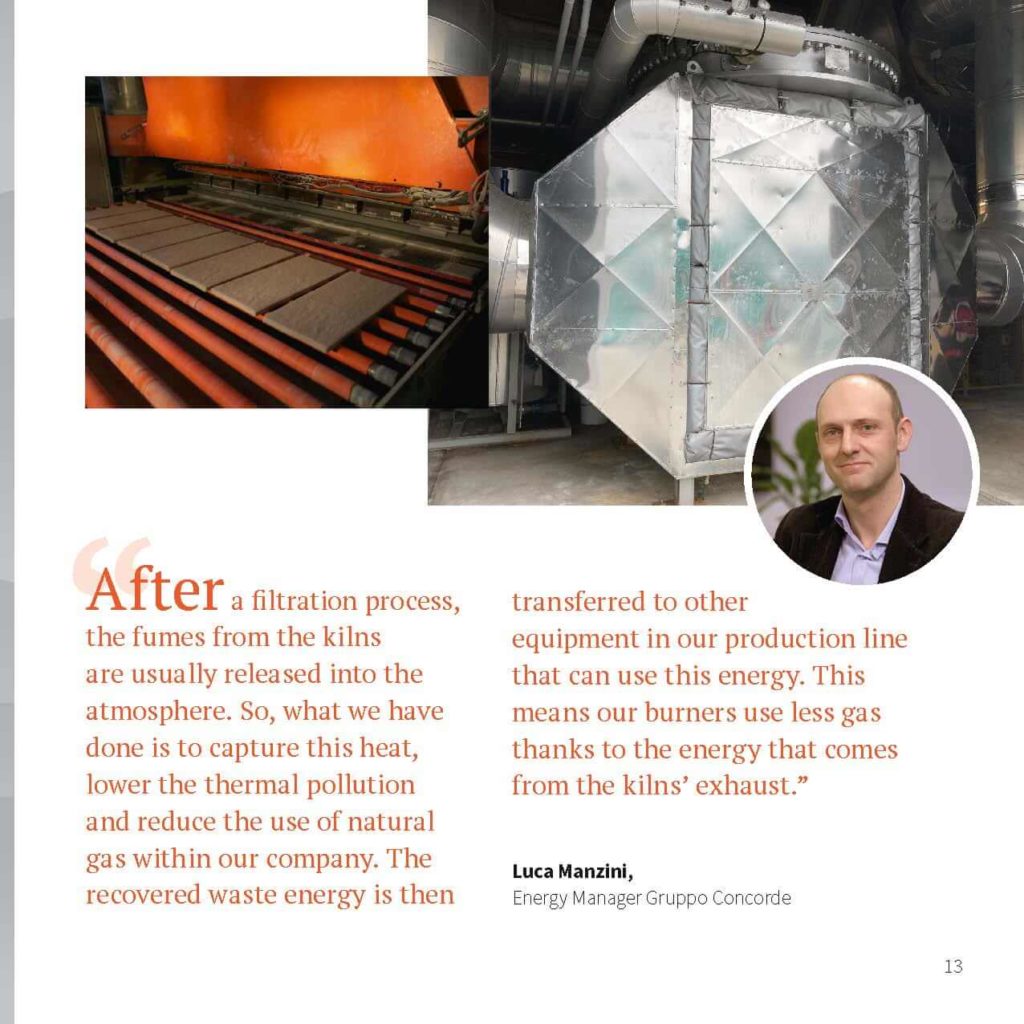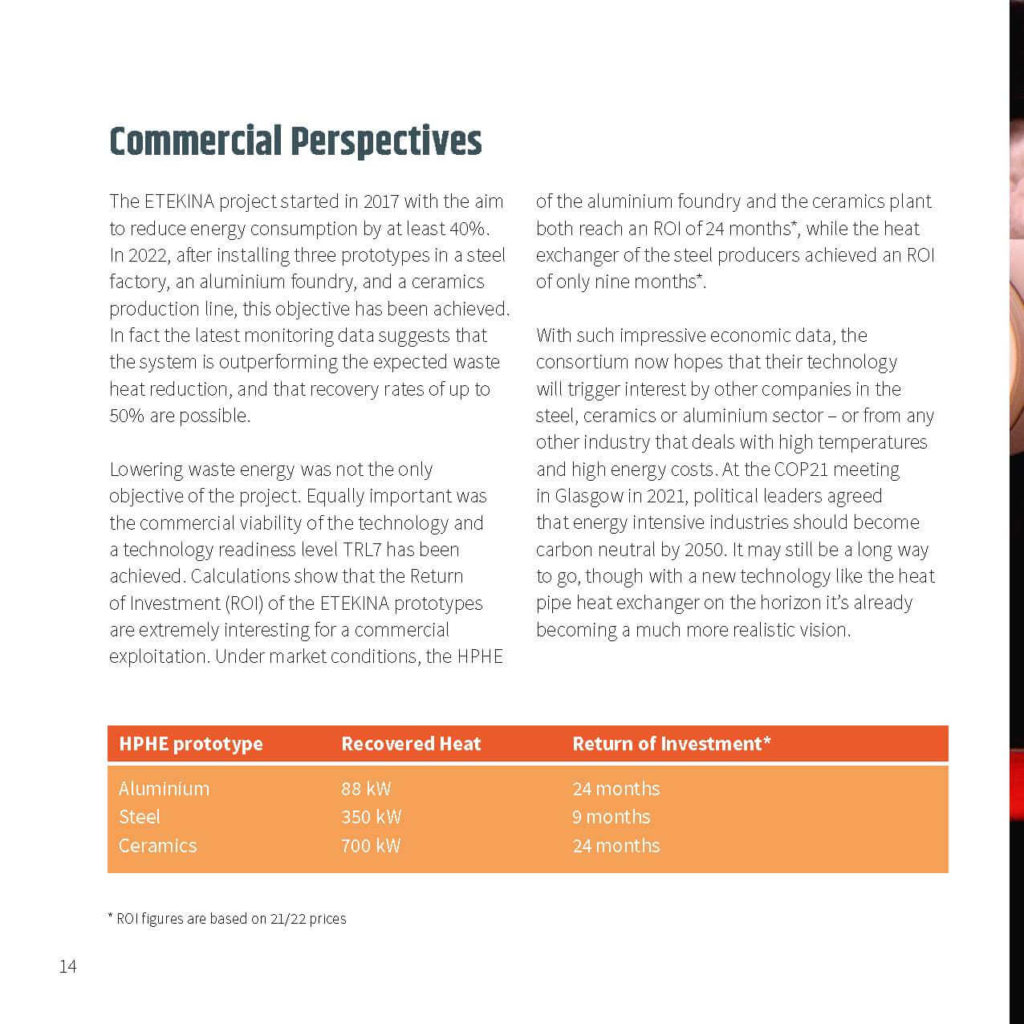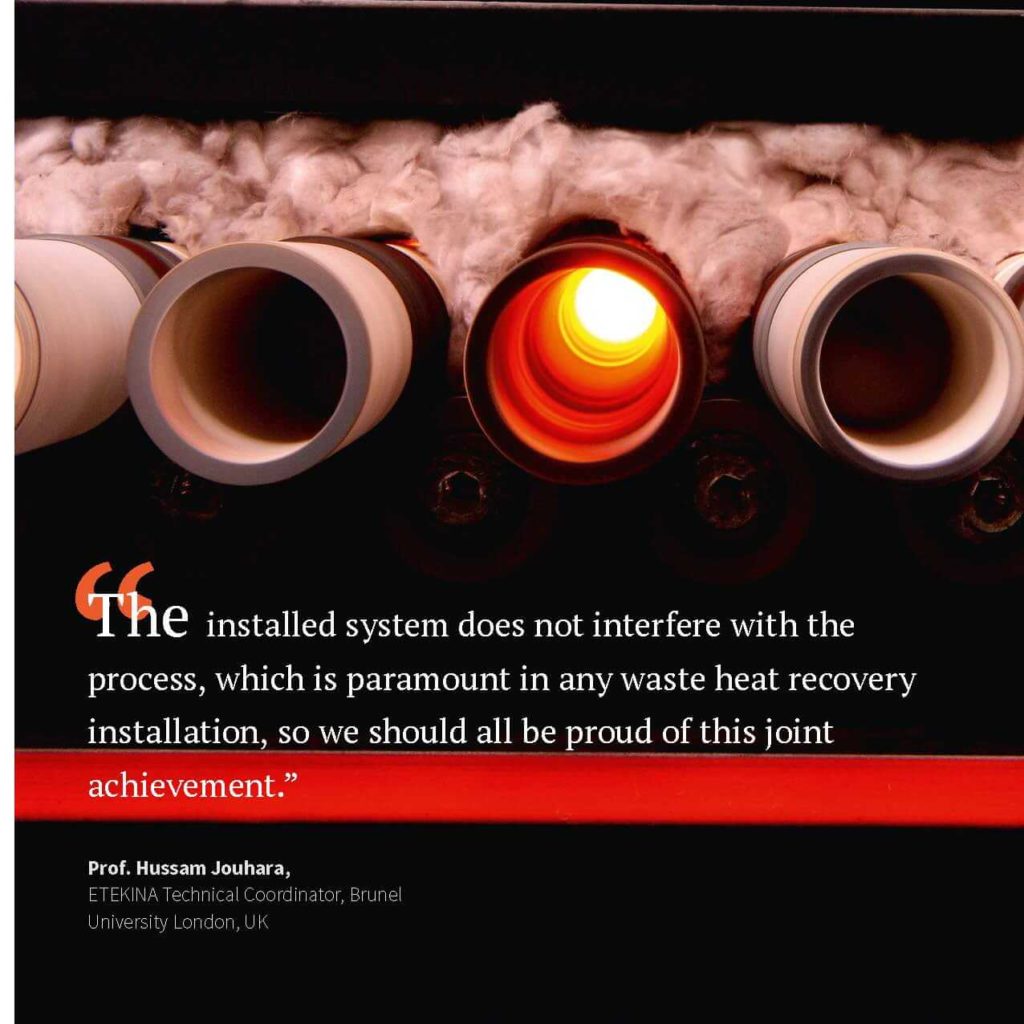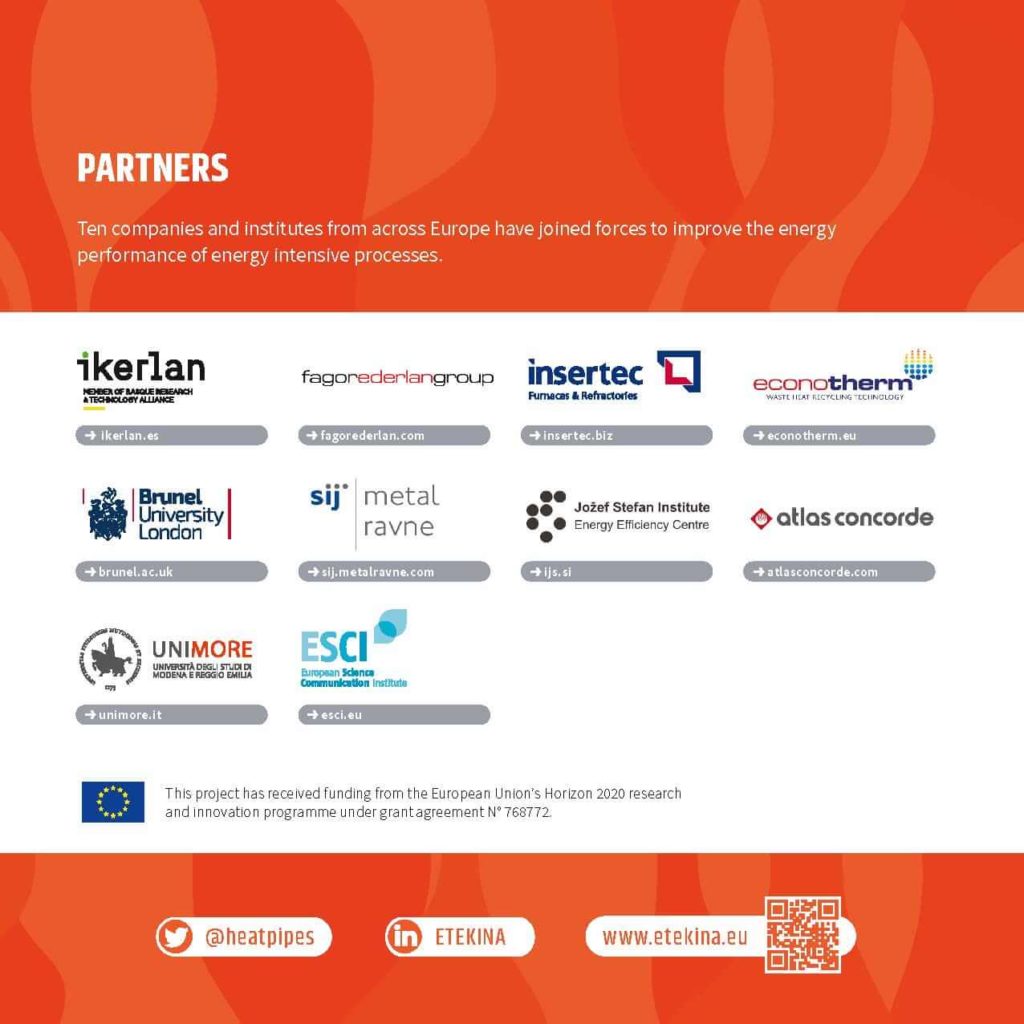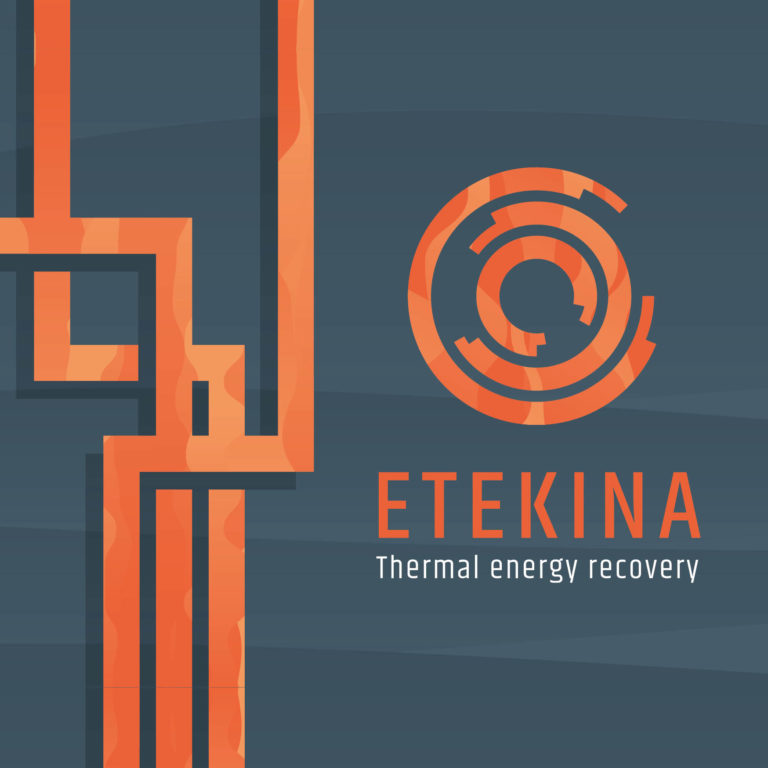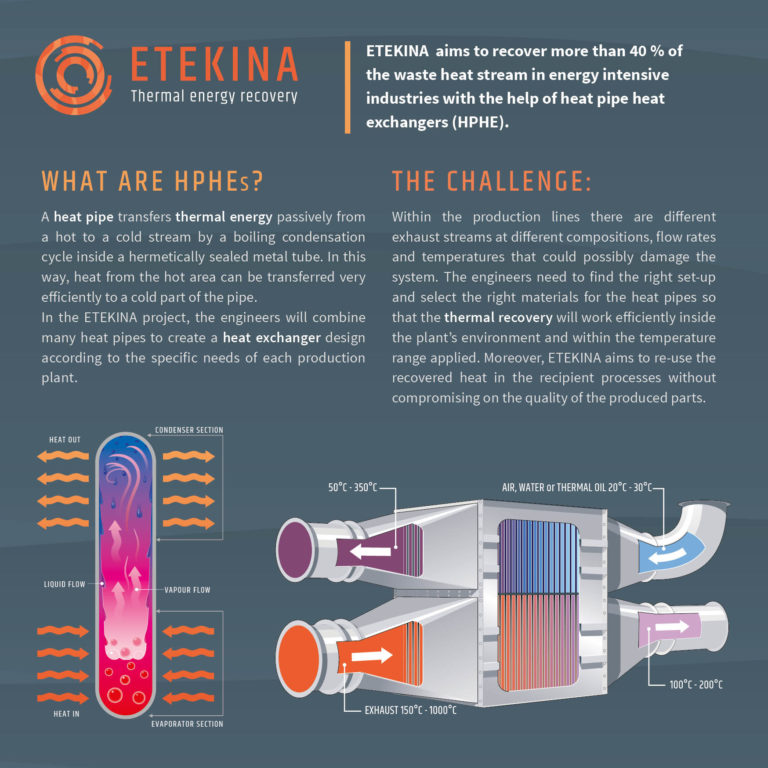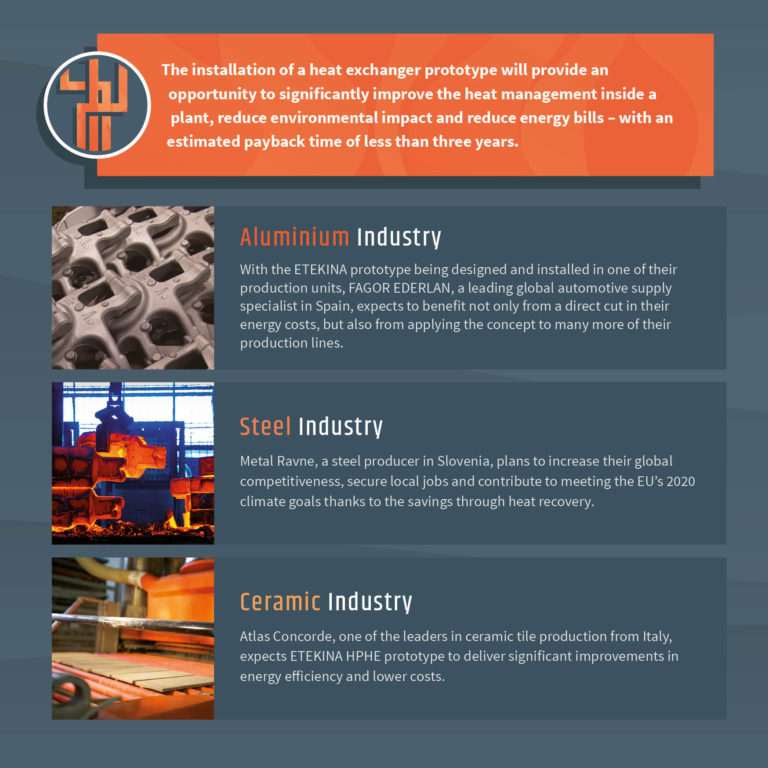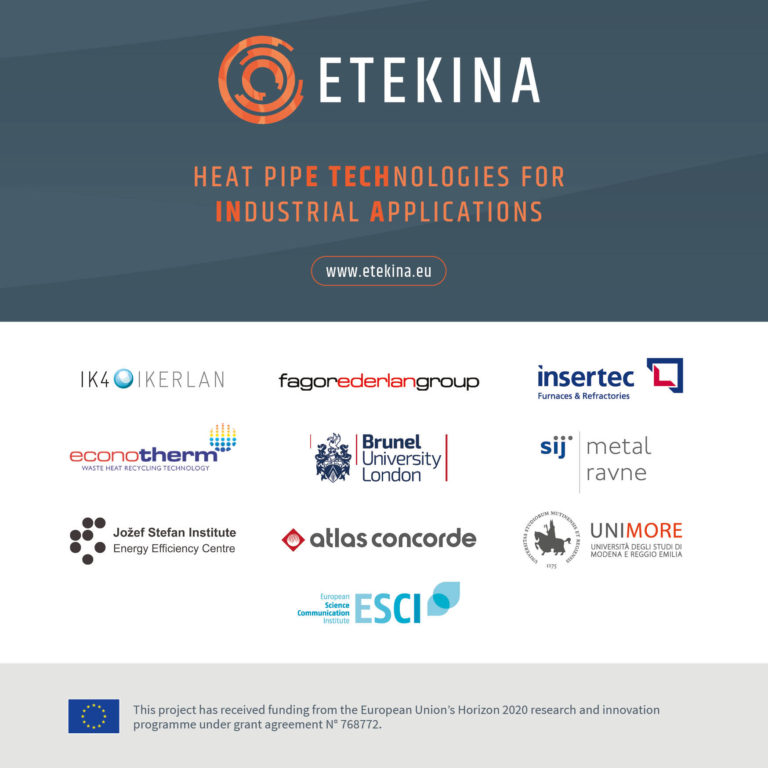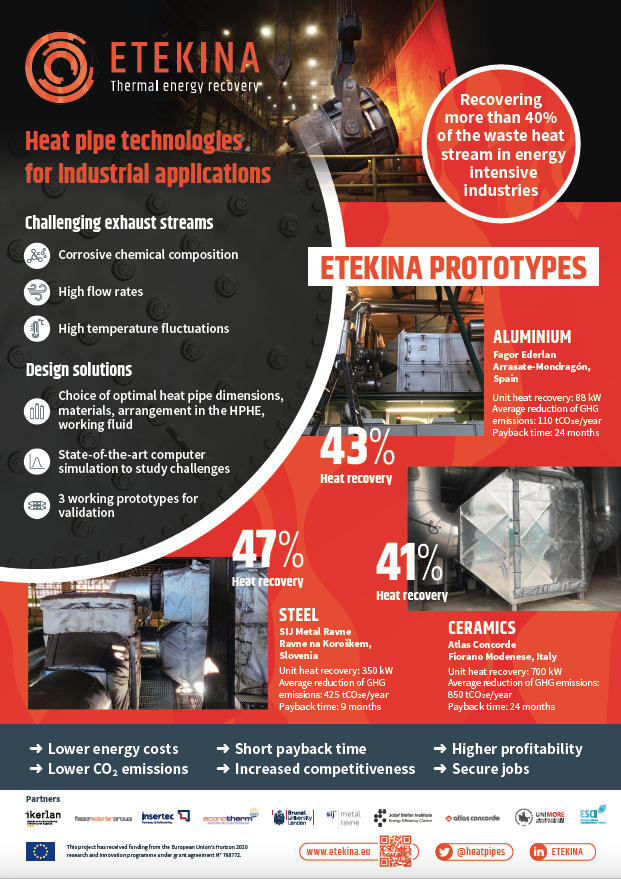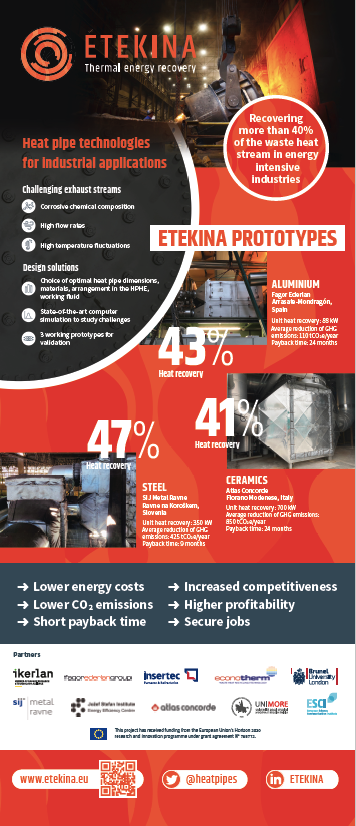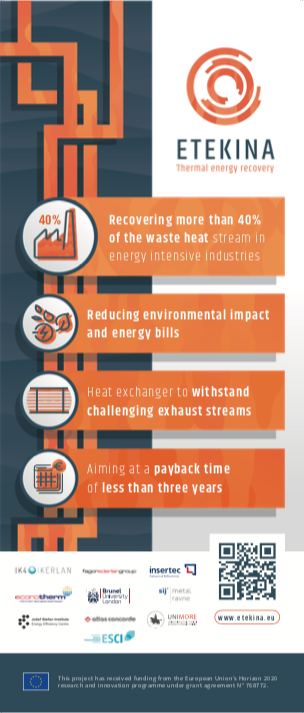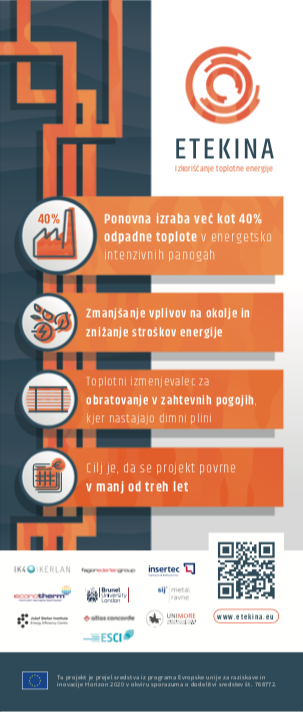D5.2 – Best Practices Book
This document aims to provide the best practices that were developed during the ETEKINA project based on the return on experience from all the involved partner in the project. this document also aims to show the benefit of the ETEKINA solution and the HPHE to a variety of potential end user to convince them of the benefits that the ETEKINA technology can bring to their manufacturing process in terms of Natural Gas consumption reduction and the Greenhouse gas reduction.
To read full deliverable, please click on image to the left.
D2.4 – Common validation methodology report
This document compiles a description of the target aspects that are going to be evaluated within ETEKINA project; the methodology of evaluation; the definition of key performance indicators (KPIs) to monitor those aspects; and the characteristics of the measured variables.
The main impacts of the ETEKINA project that will be monitored are: sensible energy recovered ratio, primary energy savings, the reduction of greenhouse gas emissions and the reduction of energy cost triggered by the project.
However as steel, aluminium and ceramic representative demo cases have each own specific performance peculiarities, specific KPIs have been defined to monitor their performance. Based on those specific KPIs and considering the common main impacts to be evaluated, some common KPIs are defined for the 3 demo cases to evaluate the ETEKINA heat recovery performance in a common way. In this document in order to preserve the confidentiality the common KPIs are shown.
Defined KPIs are the values to monitor the target impacts defined in the ETEKINA proposal and they will be directly obtained based on measurements of the project before and after the WHRS installation will be commissioned. Calculating the difference of the KPIs values before and after the installation the target impact values will be verified. The energy saving opportunity given by the heat recovery based on HPHE (Heat Pipe Heat Exchanger) technology defined in ETEKINA project will be evaluated.
The methodology and KPIs described in this document will be used in WP4 for the 3 use cases’ installations validation.
To read full deliverable, please click on image to the left.
D2.6 – Common commissioning procedure
To use the same acceptance procedure for the 3 use cases, a common commissioning procedure is defined to confirm the installations are ready for their evaluation.
The commissioning procedure considers the following aspects: the inspection of piping layout, the sensors and data acquisition operation, electric connection, hydraulic and thermal performance and the acceptance of Waste Heat Recovery System (WHRS) installation comparing design and real performance values.
Following the Scientific Coordinator’s suggestion the acceptance criteria will be defined by the technician, the RTD and the industrial partners, case by case, when the installation was ready for the commissioning.
The commissioning procedure is described in this document (D2.4) and it will be used in WP4 for the 3 use cases installations commissioning.
To read full deliverable, please click on image to the left.
D3.2 – ROI Estimation (for use case 1, 2 and 3)
In this deliverable the return on investment (ROI) of the three of heat pipes based heat exchangers (HPHE) designs that will be installed in three demonstration sites is presented . Each HPHE is specified in base of the available and required energy for each of the three use cases:
Use Case 1 (UC1): representative of non-ferrous sector,
Use Case 2 (UC2): representative of steel sector and
Use Case 3 (UC3): representative of ceramic sector.
This report describes how the ROI was estimated taking into account the primary energy saving cost and the carbon reduction savings.
The estimated ROI of the intial designs of the designed HPHEs varied between 7 months to 19 months among the the three demo cases.
To read full deliverable, please click on image to the left.
D5.4 B. Replicability Analysis Making Tool
This deliverable describes the main characteristics of the developed Replicability Tool that allows the user to do a first approach and quick evaluation of the use of Heat Pipe-Based Heat Exchangers (HPHE) technology for waste heat recovery in a defined scenario; composed by user defined hot source and cold sink streams characteristics. The user defines the scenario, introducing information about the kind of streams involved (air, water or exhaust fumes of natural gas combustion) their temperatures and flow rates. The tool recreates the recovery scenario by means of the analytical calculation of a range of HPHEs. The tool proposes HPHE solutions within a geometrical and construction parameters range under previously identified and bounded ranges. The results are approximate solutions based on boundary restrictions and assumptions. Afterwards, the tool allows the user to personalize the solution selecting parameters such as, the required thermal capacity of the heat exchanger; the minimum outlet temperature of the hot stream (to avoid the stream goes below the dew point and avoid condensation); the minimum outlet temperature of the cold stream (temperature that could be required by the thermal energy receptor process) and defining the selection criteria (minimum payback period, minimum volume or minimum weight ) to be used for finding the personalized solution. In case of positive results, the user should consult the technology provider to confirm those preliminary results and go ahead with a more precise heat recovery systems design.
To read full deliverable, please click on image to the left.
D6.3 – Introductory Project Video
The project is expected to produce an introductory project video within the first four months of the project. The ETEKINA introductory video is intended as a general presentation tool to be shown on the ETEKINA website, at fairs, conferences or other relevant events and upon request. Targets for distribution are researchers and stakeholders at large. The ETEKINA introductory video is aimed at informing relevant stakeholder communities of the general purpose of the project, its objectives, technologies used, targets and expected impacts.
To read full deliverable, please click on image to the left.
D6.2 – Project Website and Social Media Channels
The present deliverable is “Other” in nature, i.e. it is not a report. For convenience, we
provide a short report below about the structure and the features of the ETEKINA website
and the ETEKINA social media channels on LinkedIn and Twitter.
The ETEKINA website is set up along the details of Subtasks 6.4.1 and 6.4.2 described in
work plan table of Annex 1 “Description of the Action” of the Grant Agreement and the
rules governing in the Consortium Agreement signed by the partners.
To read full deliverable, please click on image to the left.

